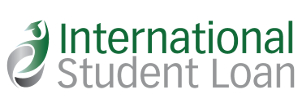With a US bank account, you will be able to deposit your financial aid awards, loans, and stipends—all of which are typically paid by check—as well as money from home into your account in order to then be able to spend it on your necessary education expenses - and maybe a little fun, too!.
Why Have a U.S. Bank Account
With a local bank account, you can pay all of your bills by check, and manage your bill payments online. In addition, many banks issue debit cards with a MasterCard or Visa emblem, which enables you to use the card to make purchases anywhere that accepts credit cards, or withdraw cash from an ATM (Automatic Teller Machine).
Find out if you can work in the U.S. on an F1 visa.
Types of Bank Accounts
There are two main types of bank accounts in the US. They are:
Checking Accounts
These allow you to frequently deposit and withdraw money. They are a great way to pay your monthly bills, and for day to day spending. When you open a checking account, it usually comes with a checkbook and a debit card. There are usually minimum monthly balances and service fees, and these vary depending on the type of account you open. Most international students only need a checking account, which they use for managing living expenses while at school. It's easy to manage your finances and transfer money online as most banks offer online banking.
Savings Accounts
These are for longer term deposits for accruing interest. The interest rates, minimum balances, and service fees will vary from bank to bank.
How to Choose a Bank
Ask your school’s international student office or check their website to find out if your school has a relationship with a specific bank to which they refer their international students. If a bank is used to working with international students, the process of opening a bank account will run much more smoothly for you. You might also try to find a bank with a branch close to your campus.
You will want to compare services and costs of several different banks before choosing one at which to open a new bank account. Find out whether the bank offers interest on checking accounts, what the interest rate is for savings accounts, and whether the account offers overdraft protection. You will also want to find out how long it will take to “clear” a check, meaning how long from the time you deposit a check in your account until you are allowed to withdraw the funds. Generally, wired funds are available immediately, but the hold on domestic and foreign checks varies by amount, origination bank, and drawn currency, and can be several days to a week or even longer for non-US (or non-US dollar denominated) checks.
Some Things to consider when comparing bank accounts
Bank ATM transactions
Some banks charge you a fee for withdrawing cash from ATMs, especially if it is a different bank’s ATM, or if you exceed a certain number of withdrawals per month. An ATM (Automated Teller Machine) may be known as a cash machine or cashpoint in your country.
Monthly Service Fees
Many bank accounts in the U.S. charge monthly service fees. It’s worth shopping around for a bank account where you don’t have to pay fees or service charges.
Minimum balance
You may be required to keep a certain minimum balance in your account at all times, or there may be a minimum deposit required to open a bank account. Even without a minimum balance requirement, if your balance drops below $0 payments may get rejected due to non sufficient funds and/or you may be liable for an overdraft fee.
Learn about CONDITIONAL LOAN APPROVAL FOR INTERNATIONAL STUDENT LOANS .

How to Open a Bank Account
Although many banks advertise that you can open an account over the phone or online, you should plan to open an account in person. As an international student, you do not fit neatly into any category set by US banks, and it will be easier to deal with any complications in person. In addition, it’s always useful to establish a face to face relationship if you require additional services. When you go to the bank to open a bank account, you will need to bring:
- Your full name, home address, home telephone number, your campus telephone number, and your college address (Letterhead showing the local address – i.e. utility bills or apartment contract)
- Unexpired passport
- I-94 card
- I-20, DS-2019 or I-797 approval notice
- Any secondary form of identification (such as: your passport, your Student ID card, birth certificate, state driver’s license, or a letter from the International Students and Scholars Office)
- Enrollment verification letter from your school
You will also need the funds you want to deposit and open the account with. Every bank has slightly different requirements, so make sure you ask beforehand so you don’t forget something you need.


